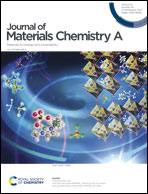In situ characterization of lithium-metal anodes
Abstract
With the increasing demand for high energy density, traditional lithium-ion batteries with graphite anodes can no longer meet the requirements. Accordingly, due to its extremely high theoretical specific capacity (3860 mA h g−1) and most negative electrochemical potential (−3.04 V versus the standard hydrogen electrode), lithium metal has re-emerged as the focus of research. However, due to its instability, growth of Li-dendrites, and volume changes during charging and discharging, lithium metal anodes (LMAs) cause a reduction in the battery performance, hindering their commercial application. Therefore, it is necessary to study the reasons for the failure mechanism of lithium metal anodes. Due to the high reactivity of lithium metal and its sensitivity to air, conventional characterization needs to be performed after disassembling the battery, resulting in the inability to obtain dynamic information during the charging and discharging process. On the contrary, the emergence of in situ characterization not only can avoid sample contamination due to the disassembly of the battery but also realize real-time monitoring of lithium metal anodes. In this study, initially, we discuss the reasons for the failure of LMAs and the related theoretical models, and subsequently highlight the current advances in in situ characterization in LMAs. This review is expected to provide a good understanding of the evolution of Li-dendrites and solid electrolyte interphase (SEI), enabling the faster commercialization of Li-metal batteries. Finally, the future research directions in Li-metal batteries in situ characterization are discussed.



 Please wait while we load your content...
Please wait while we load your content...